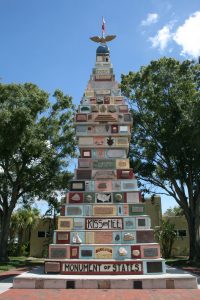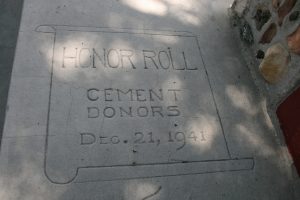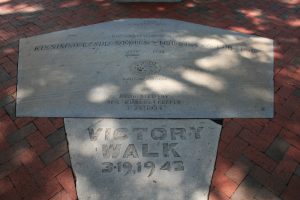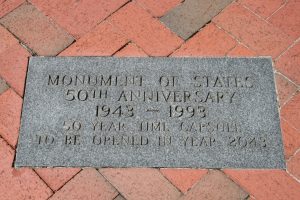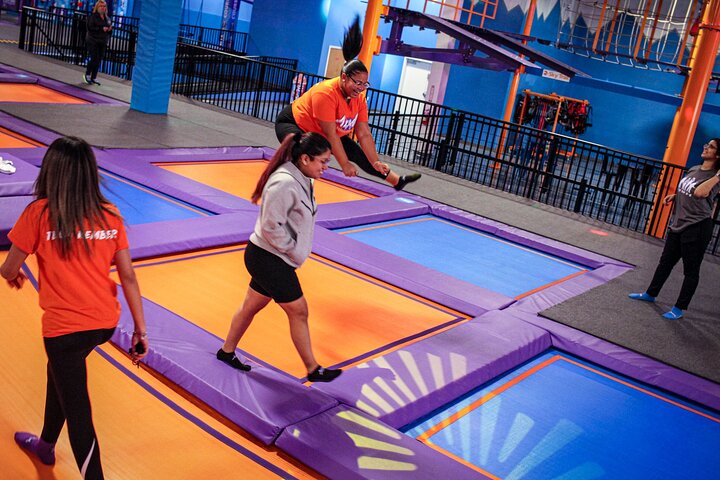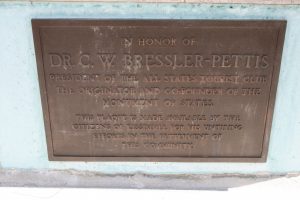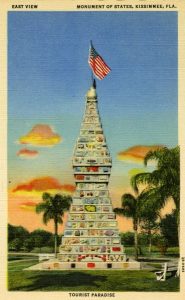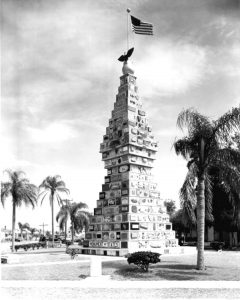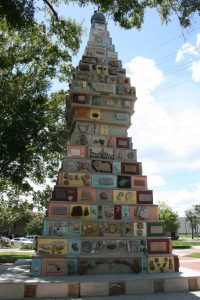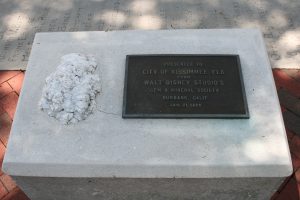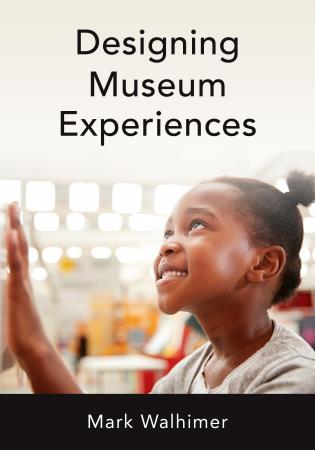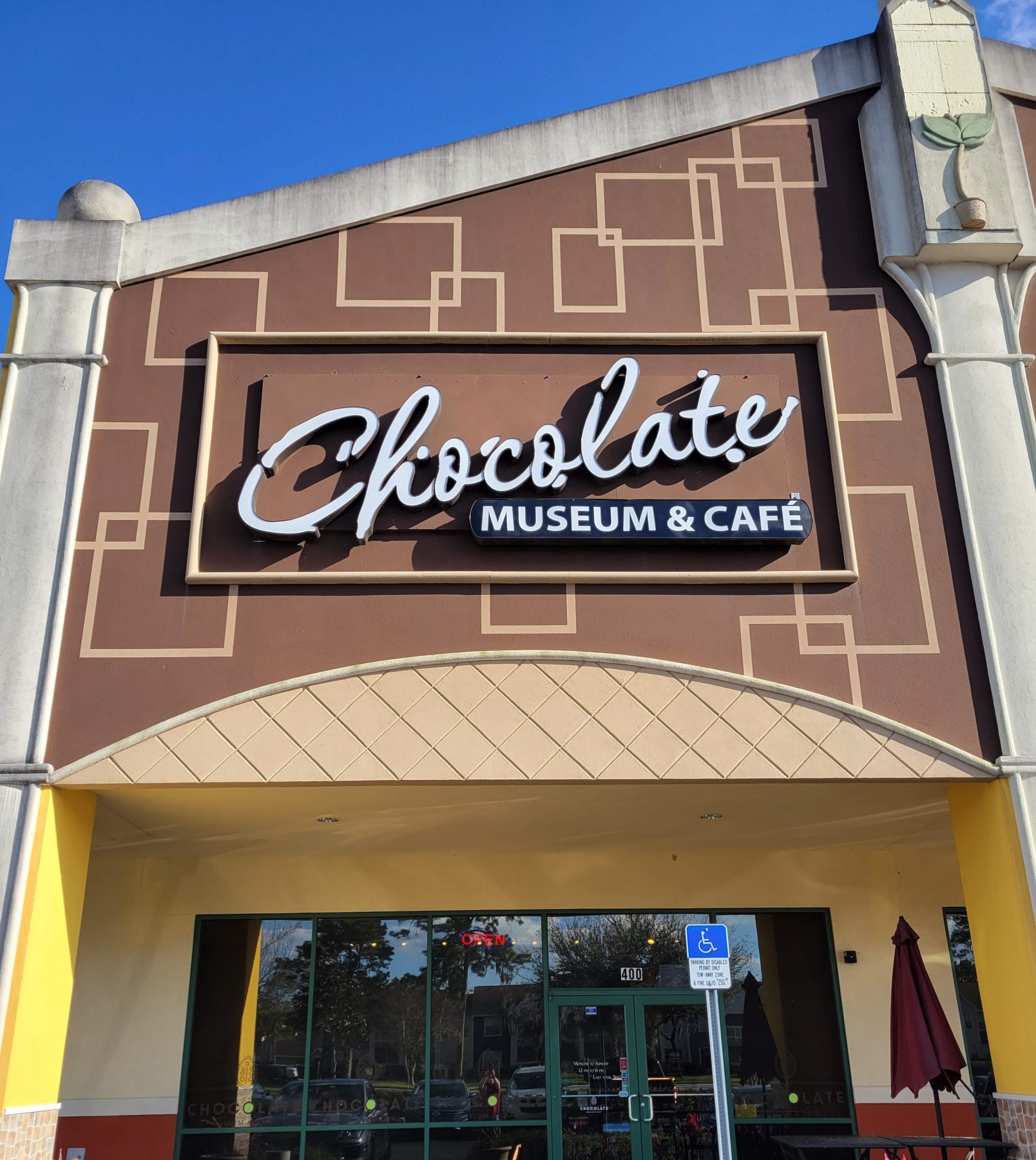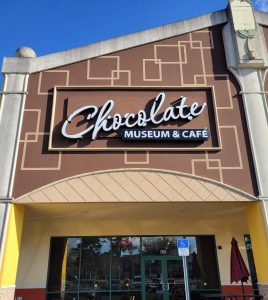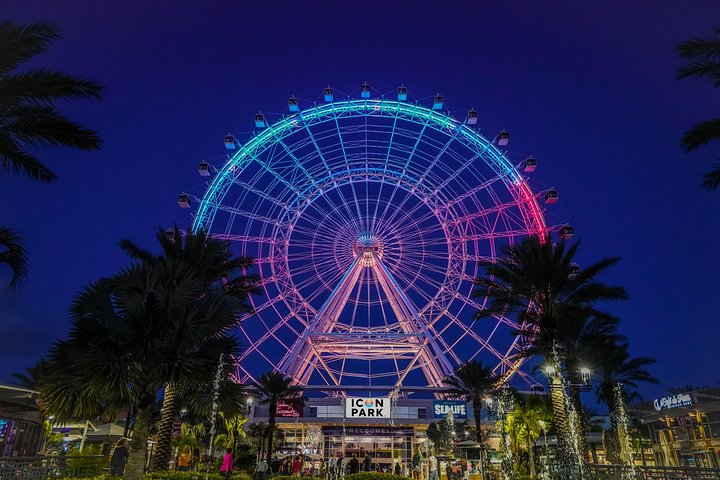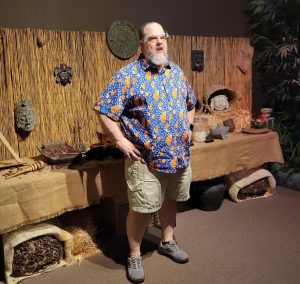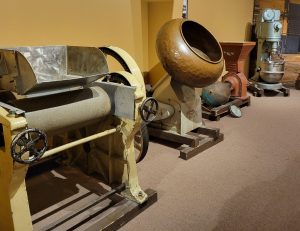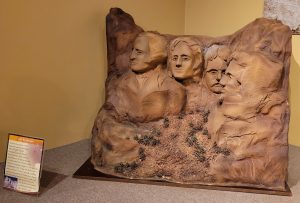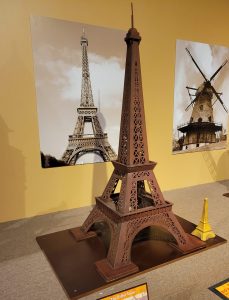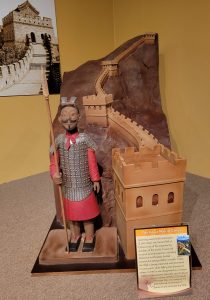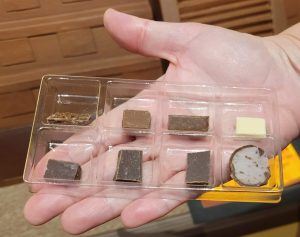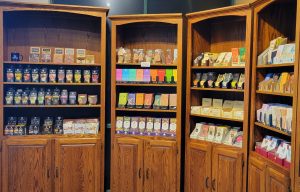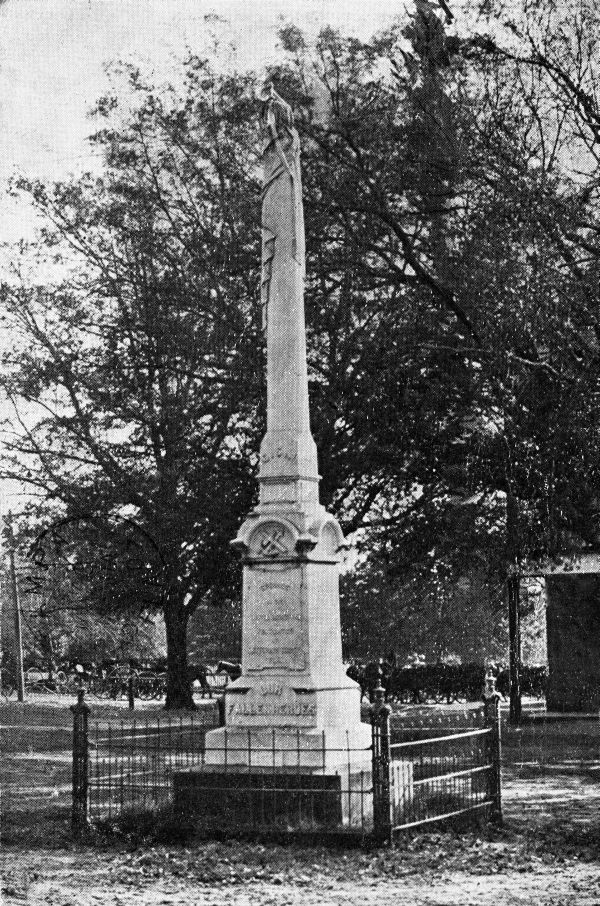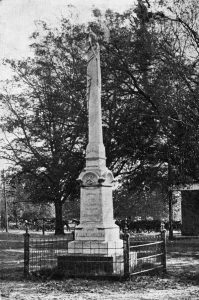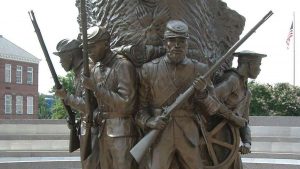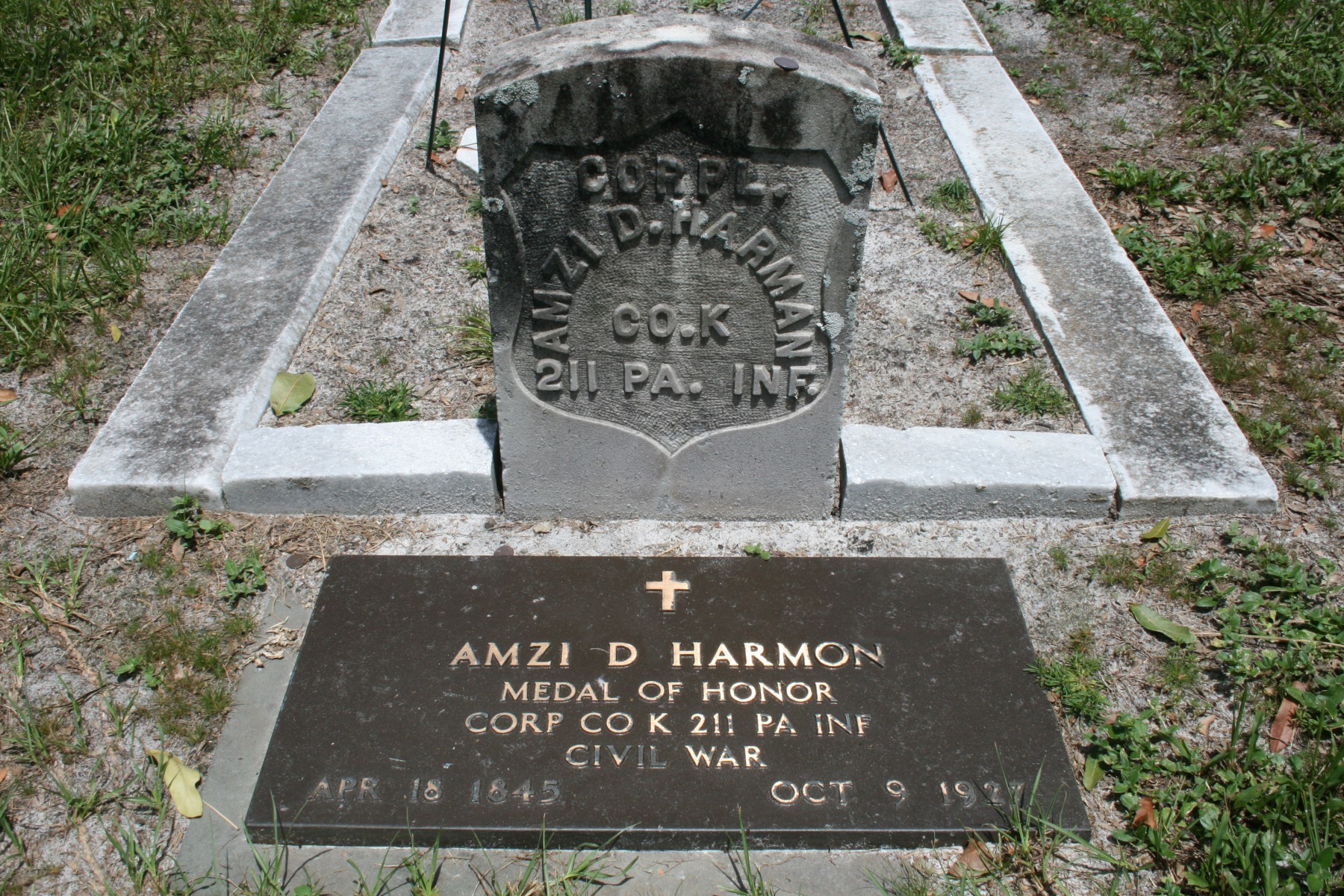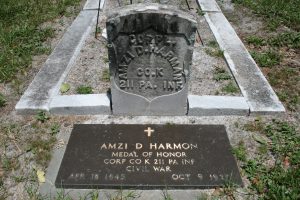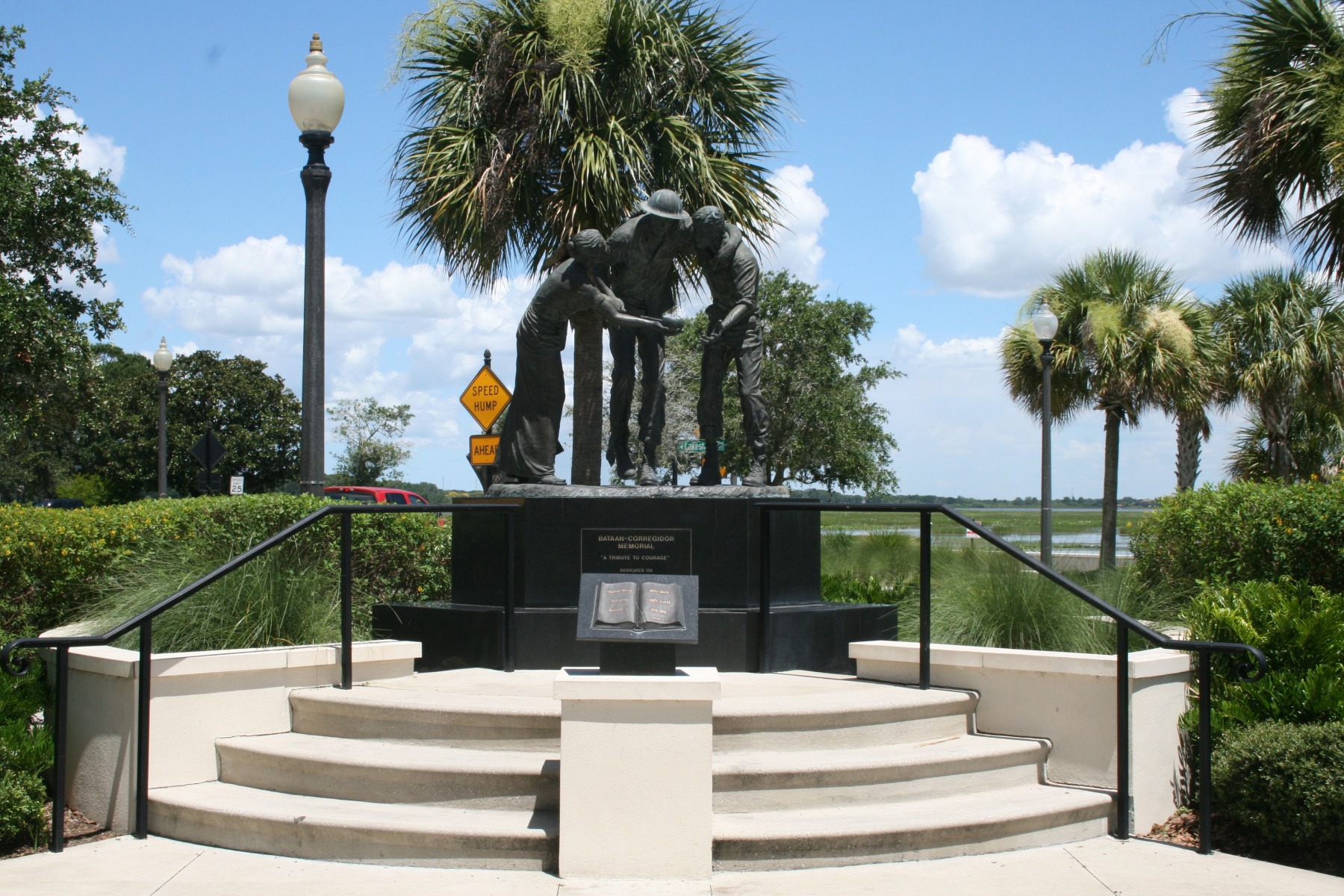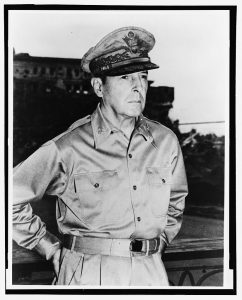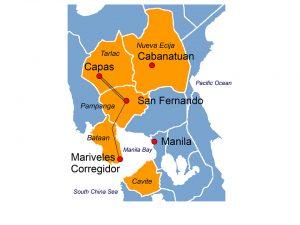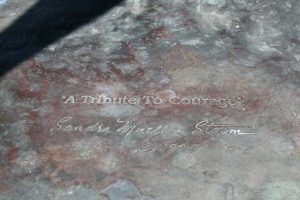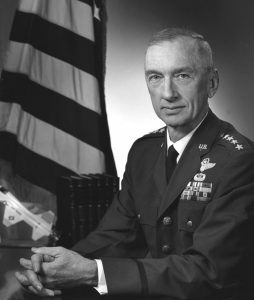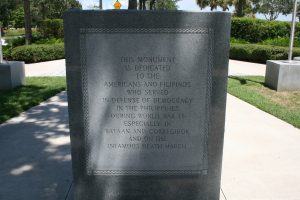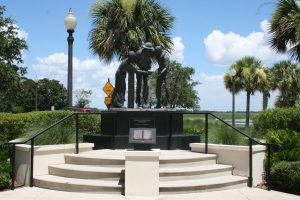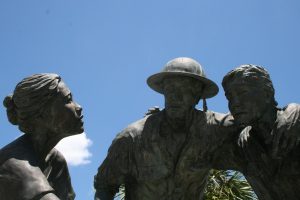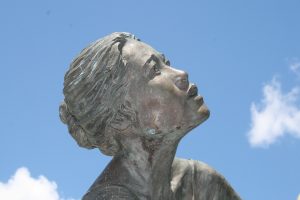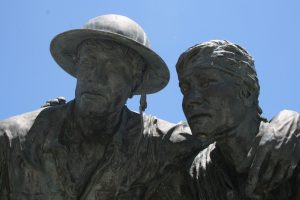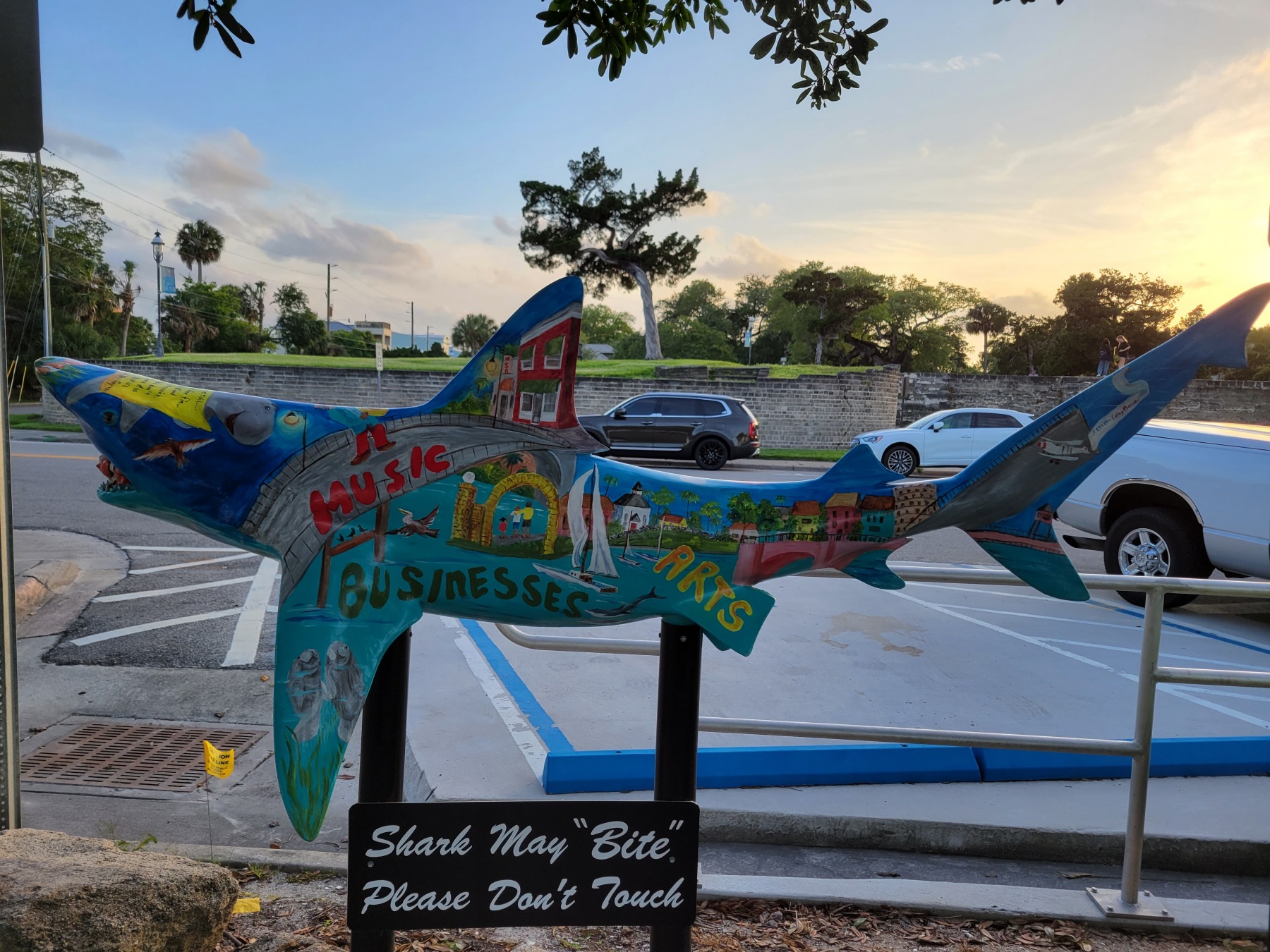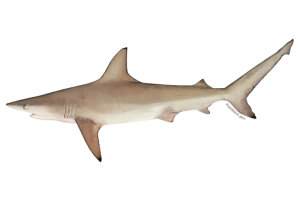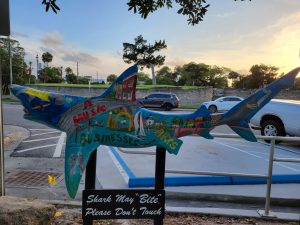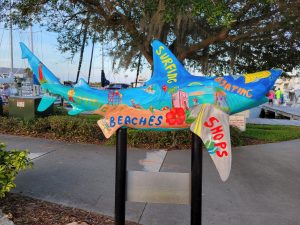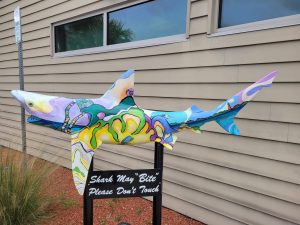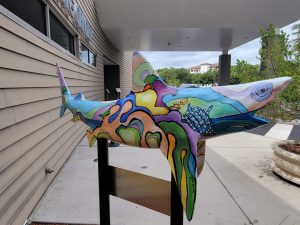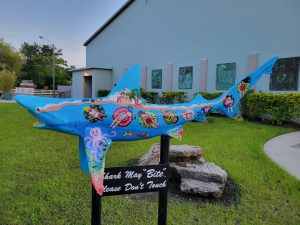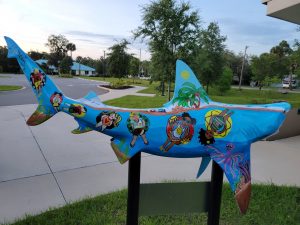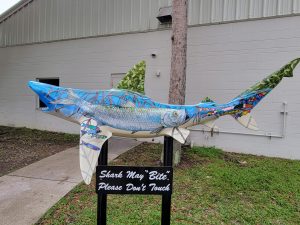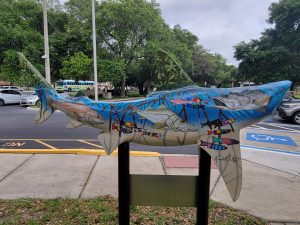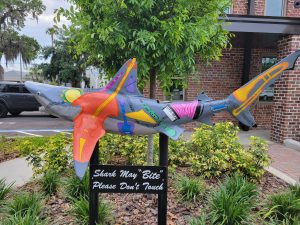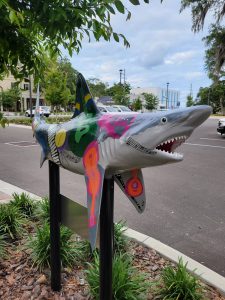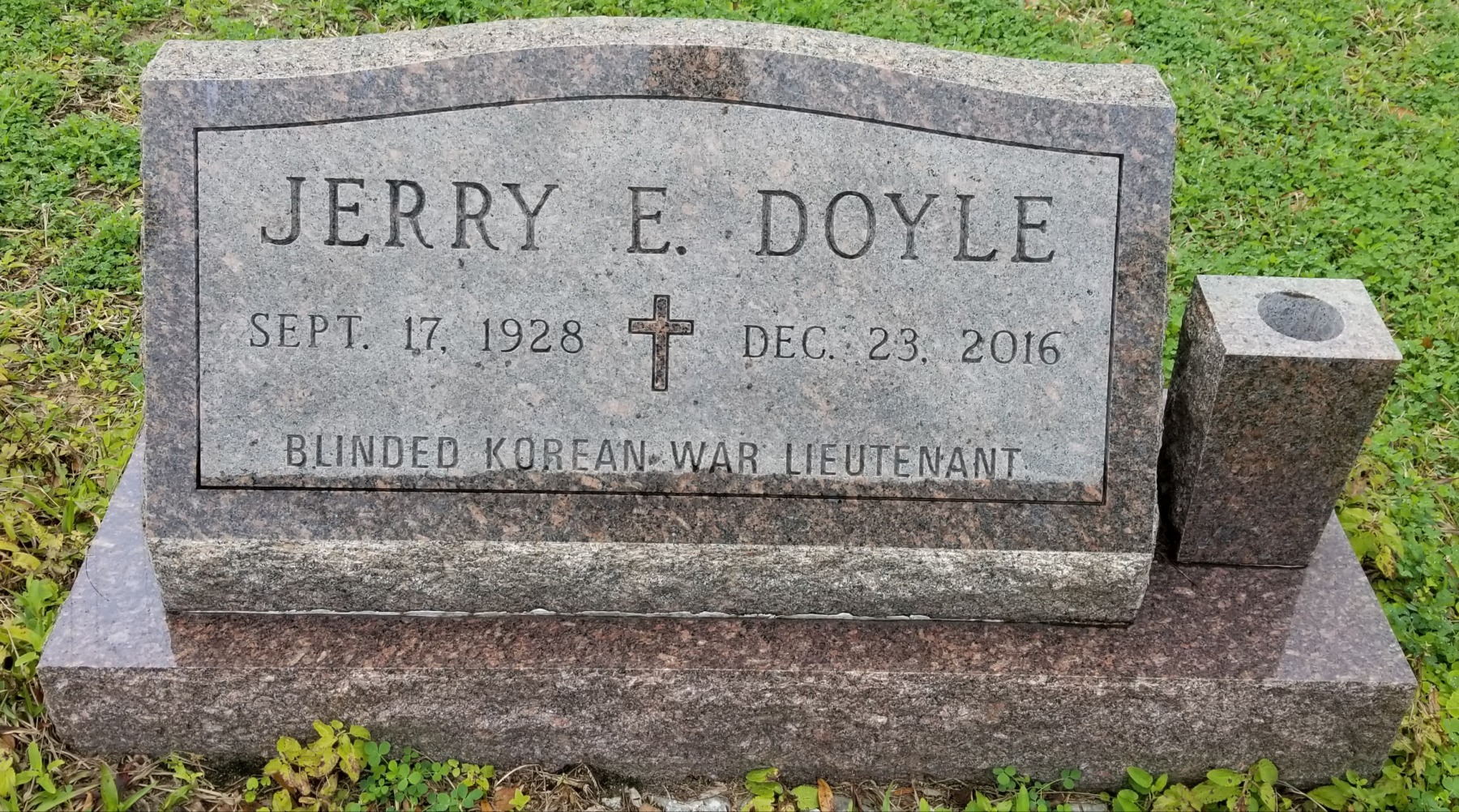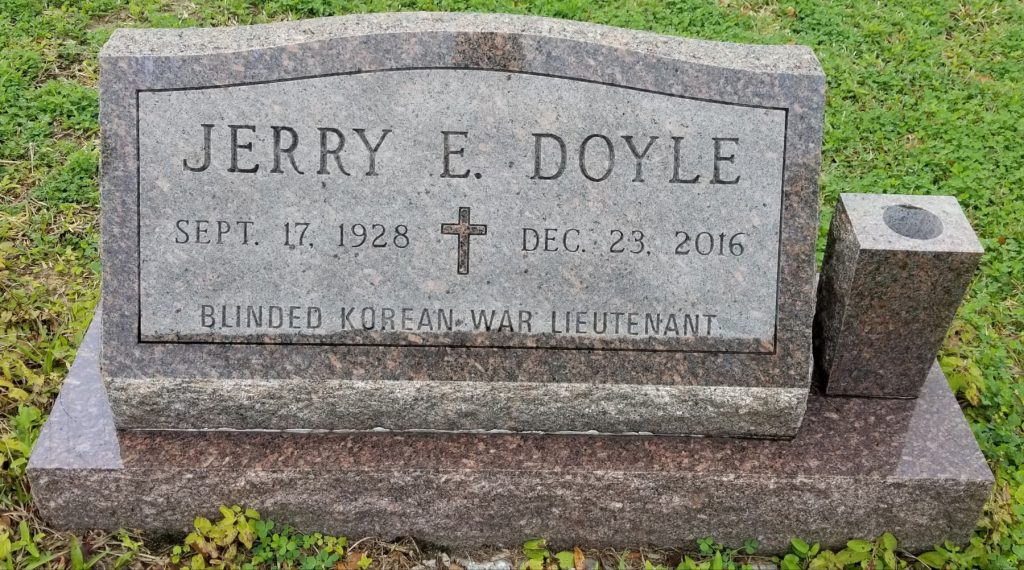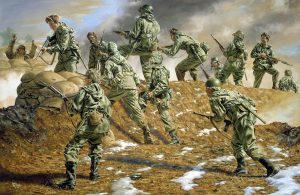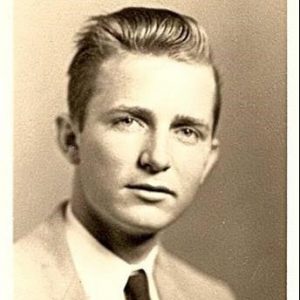Chisholm High School Family Tree Monument in New Smyrna Beach
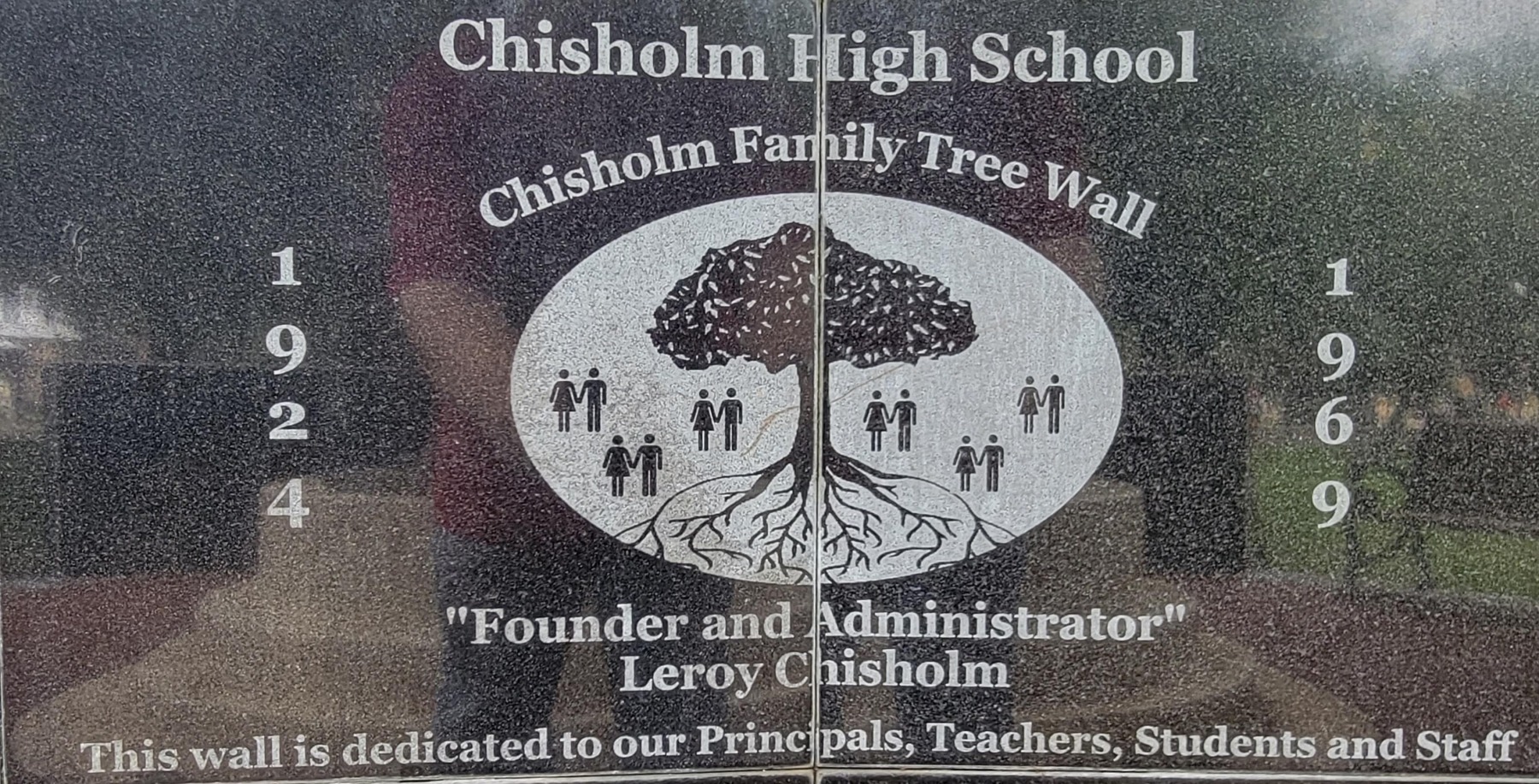
In the days of segregation, the city of New Smyrna Beach was no different than
communities across the country. African American students were routed to schools
that were clearly separate but not equal. While not having the financial resources
that were allocated to white schools, that did not mean that students, faculty and
staff, did not have pride in their community school.
Are you interested in learning about the businesses of the Historic West Side, in New Smyrna Beach? You need a copy of History of New Smyrna Black Businesses with Present Area Businesses written by Fannie Minson Hudson. Click the link or the image to the left to order your copy today!
While there is no doubt that the end of legal segregation in education has been a positive for students of all races, it was a difficult shift and has not been without issue. Many believe that the end of segregation often brought the end of community schools and contributed to a breakdown of local community.
Florida State University professor of economics and past director of African-American
Studies, and current associate dean for diversity, equity, and inclusion, Patrick L. Mason stated that teaching was considered to be one of the highest professions that educated African-Americans could achieve. “They were blocked from most other professions, so you get all these exceptional people who become teachers.”
Dr. Michael Butler of Flagler College has written an incredible book on the struggles of integration in Escambia County, FL. Beyond Integration is highly recommended.
Mason points out that one of the tragedies of integration was the loss of certain
black institutions, of which schools were most prominent. Black schools such as
Chisholm High School were shuttered and students were forced to white schools.
“We went from our schools, which were a thing of great pride, to their schools,
where we were tolerated.” Principals, teachers, and other staff, were often demoted
or put into roles well below their skill level.
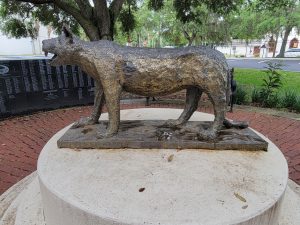
As Chisholm student Michael Williams relates, “It was a neighborhood school, principals and teachers went to the same church, and these people were our role models.”
Roy Brooks, a 1968 Chisholm graduate stated, “At Chisholm, we had personal contact, not only between the teachers with the students, but also the teachers with the parents.” This interaction is something that is missing in the world of education today.
Chisholm High School can trace its roots to the turn of the 20th century. It was then that Leroy Chisholm, a local barber, turned two adjoining houses into classrooms for black children. Chisholm would later fund the Chisholm Academy, a school for middle school aged children. When grades 10 through 12 were added to the Academy, the name was changed to Chisholm High School.
Chisholm High School was closed after the 1969 academic year but its legacy is
not forgotten. The Chisholm Alumni Association is rightfully proud of their
school. On July 14, 2012, the association dedicated a monument on the site of the
Babe James Center in the heart of the Historic West Side of New Smyrna Beach.
The text of the marker reads:
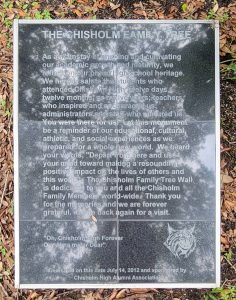
The Chisholm Family Tree
As a mainstay of shaping and cultivating
Our academic growth and maturity, we
Reflect on our proud high school heritage.
We hereby salute the students who
Attended Chisholm High twelve days,
Twelve months, twelve years; teachers
Who inspired and encouraged us;
Administrators and staff who nurtured us.
You were there for us! Let this monument
Be a reminder of our educational, cultural,
Athletic, and social experiences as we
Prepared for a whole new world. We heard
Your words, “Depart from here and use
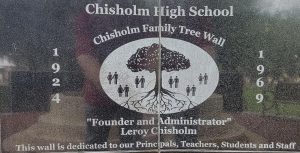
Your mind toward making a resounding
Positive impact on the lives of others and
This world.” The Chisholm Family Tree Wall
Is dedicated to you and all the Chisholm
Family members world-wide. Thank you
For the memories and we are forever
Grateful. Come back again for a visit.
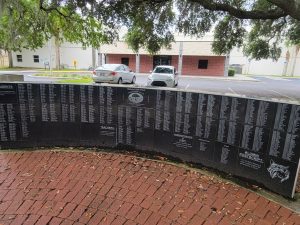
“Oh Chisholm High Forever Our Dear Alma mater Dear”
Dedicated on this date July 14, 2012 and sponsored by
Chisholm High Alumni Association
If you have information on Chisholm High School you would like to share, please
reach out to me or leave a comment to this post.
To learn more about Chisholm High School I recommend contacting the Mary S.
Harrell Black Heritage Museum.
In addition, you should reach out to the New Smyrna Museum of History.
The Chisholm High Alumni Organization has a Facebook page. If you attended
Chisholm High School, you are encouraged to get in touch with them.
Sources:
Daytona Beach News Journal July 14, 2018
This post may contain affiliate links. If you click these links and make a purchase, I may receive a small commission. This commission does not affect any price that you pay. All views and opinions provided are my own and are never influenced by affiliate programs or sponsors providing products.

Essence
from: College Subscription Services LLC
Written with the African American woman in mind, Essence discusses a wide array of topics including fashion, entertainment, beauty tips, and culture. Click the link or the image for exclusive deals on a subscription and begin enjoying issues shortly.





